Long-Term Monitoring of Health Inequalities: Headline Indicators - October 2012
An Official Statistics publication for Scotland. An annual report of headline indicators of health inequalities, including data for most indicators to 2010.
This document is part of a collection
Mental Wellbeing (WEMWBS) - adults aged 16 years and over
Summary
- Inequalities are increasing in absolute terms but remain stable in relative terms.
There is a clear difference in mean WEMWBS scores in terms of deprivation. Those in the most deprived decile reported a lower mean score (indicating lower mental wellbeing) than those in the highest decile. The absolute level of inequality has increased slightly in the last two years, from a difference of 3.8 in mean WEMWBS scores in 2009 to 5.0 in 2011. Relative inequality has remained stable over the last four years.
Inequalities gradient in the most recent year available
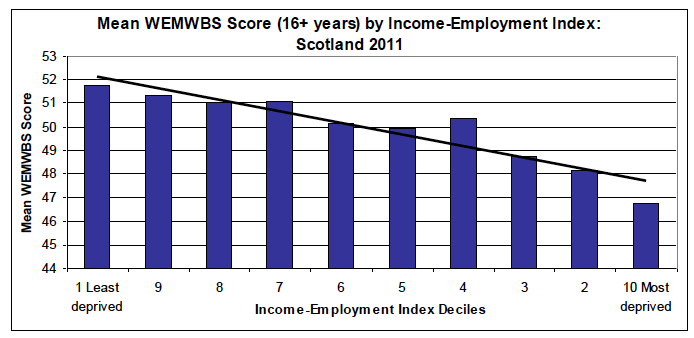
Relative Index of Inequality (RII) over time
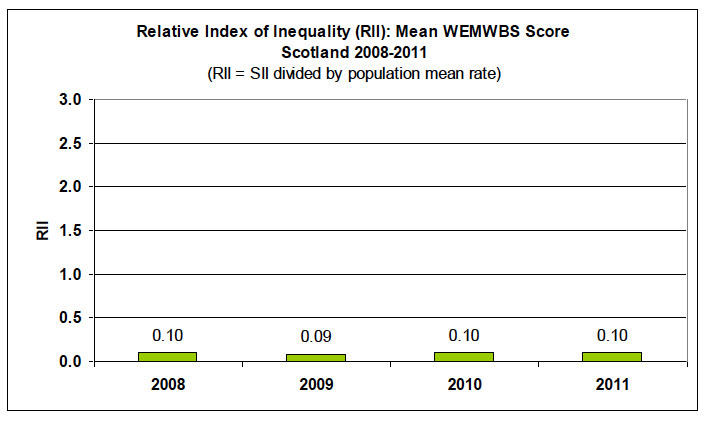
Absolute range over time
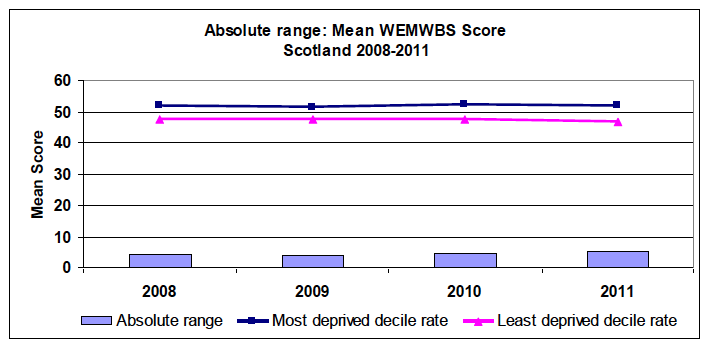
Scale / context
| Income-Employment Index Decile | Mean WEMWBS Score 2008 | Mean WEMWBS Score 2009 | Mean WEMWBS Score 2010 | Mean WEMWBS Score 2011 |
|---|---|---|---|---|
| most deprived | 47.4 | 47.5 | 47.5 | 46.7 |
| 2 | 47.7 | 47.7 | 47.9 | 48.2 |
| 3 | 48.9 | 49.0 | 48.4 | 48.8 |
| 4 | 49.6 | 49.3 | 49.6 | 50.4 |
| 5 | 49.9 | 49.2 | 50.1 | 49.9 |
| 6 | 50.5 | 50.1 | 50.7 | 50.1 |
| 7 | 51.0 | 50.6 | 50.4 | 51.1 |
| 8 | 51.3 | 50.7 | 51.3 | 51.0 |
| 9 | 51.6 | 51.6 | 52.0 | 51.3 |
| least deprived | 51.7 | 51.3 | 52.0 | 51.7 |
| Total | 50.0 | 49.8 | 49.9 | 49.9 |
Low Birthweight
Summary
- Inequalities are narrowing in both absolute and relative terms
Around 3,000 low birthweight babies (less than 2.5 kg) are born each year, accounting for 5-6% of total live, full-term, singleton births in Scotland. Low birthweight babies are more common in deprived areas than in areas of low deprivation (6.8% in the most deprived areas, compared to 3.5% in the least deprived, in 2010). Inequalities were broadly stable between 1998 and 2006, but since then have narrowed in both relative and absolute terms. This has been due to a falling percentage of low birthweight babies in the most deprived areas in recent years, while the proportion in the least deprived areas has remained fairly stable.
Inequalities gradient in the most recent year available
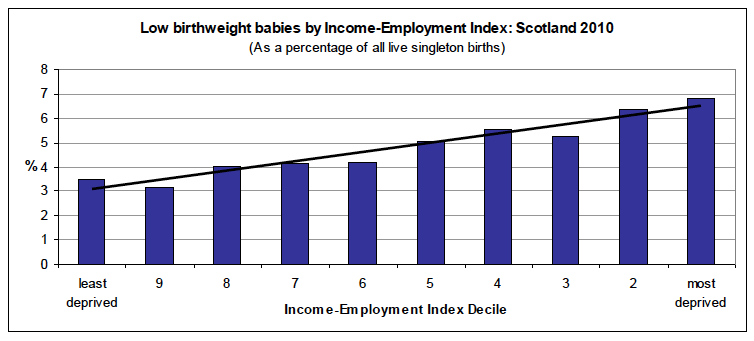
Relative Index of Inequality (RII) over time
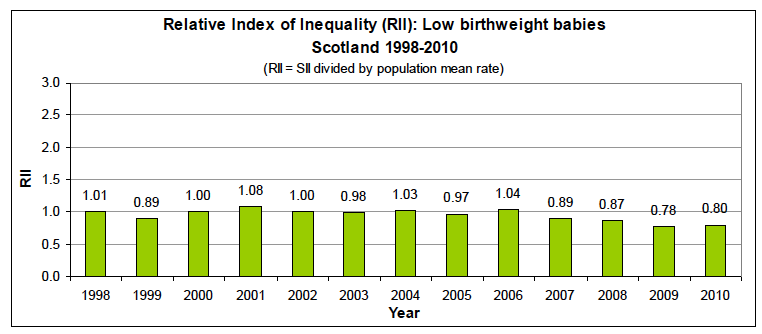
Absolute range over time
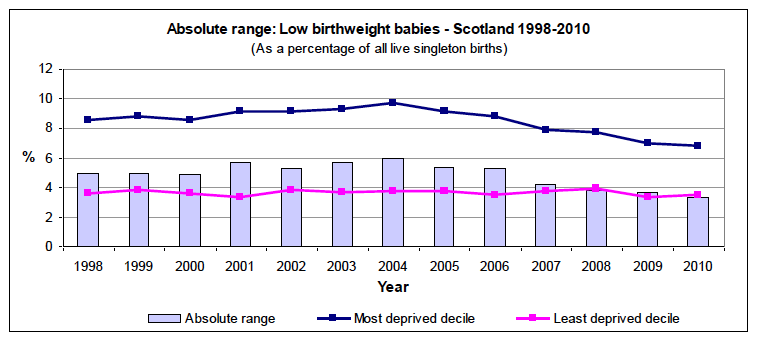
Scale / context
| Number of low BW babies | Target population size (live singleton births) | Percentage | |
|---|---|---|---|
| 1998 | 3,108 | 55,152 | 5.6 |
| 1999 | 3,098 | 52,726 | 5.9 |
| 2000 | 2,906 | 51,082 | 5.7 |
| 2001 | 2,848 | 49,752 | 5.7 |
| 2002 | 2,910 | 48,952 | 5.9 |
| 2003 | 3,026 | 50,071 | 6.0 |
| 2004 | 3,030 | 51,852 | 5.8 |
| 2005 | 3,056 | 51,372 | 5.9 |
| 2006 | 2,928 | 52,286 | 5.6 |
| 2007 | 3,095 | 55,086 | 5.6 |
| 2008 | 3,134 | 56,738 | 5.5 |
| 2009 | 2,896 | 55,797 | 5.2 |
| 2010 | 2,756 | 55,153 | 5.0 |
Contact
Email: John Dowens
There is a problem
Thanks for your feedback